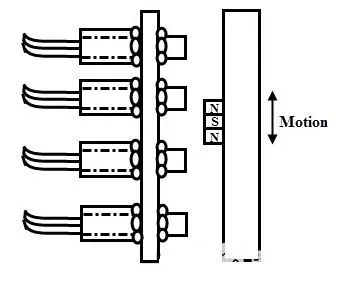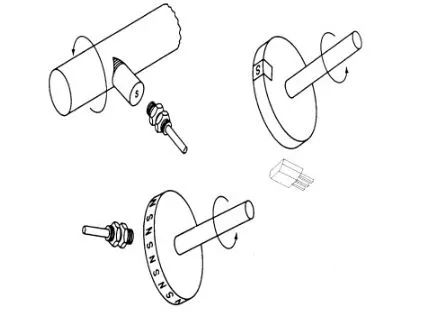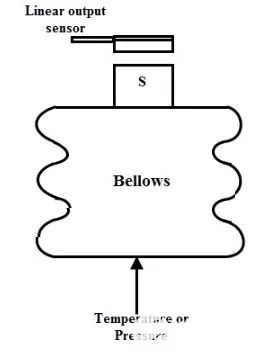Hall sensors are based on the Hall effect. The Hall effect is a basic method to study the properties of semiconductor materials. The Hall coefficient measured by the Hall effect experiment can determine important parameters such as the conductivity type, carrier concentration and carrier mobility of semiconductor materials.
Classification
Hall sensors are divided into linear Hall sensors and switching Hall sensors.
1. Linear Hall sensor consists of Hall element, linear amplifier and emitter follower, and outputs analog quantity.
2. The switch-type Hall sensor is composed of a voltage regulator, a Hall element, a differential amplifier, a Schmitt trigger and an output stage, and outputs digital quantities.
Elements made of semiconductor materials based on the Hall effect are called Hall elements. It has the advantages of being sensitive to magnetic fields, simple in structure, small in size, wide in frequency response, large in output voltage variation and long in service life. Therefore, it has been widely used in the fields of measurement, automation, computer and information technology.
Main application
Hall effect sensors are widely used as position sensors, rotational speed measurement, limit switches and flow measurement. Some devices work based on the Hall effect, such as Hall effect current sensors, Hall effect leaf switches, and Hall effect magnetic field strength sensors. Next, the position sensor, rotational speed sensor and temperature or pressure sensor are mainly described.
1. Position sensor
Hall effect sensors are used to sense sliding motion, in this type of sensor there will be a tightly controlled gap between the hall element and the magnet, and the induced magnetic field will change as the magnet moves back and forth at the fixed gap. When the element is near the north pole, the field will be negative, and when the element is near the south pole, the magnetic field will be positive. These sensors are also called proximity sensors and are used for precise positioning.
2. Speed sensor
In speed sensing, the Hall effect sensor is placed fixedly facing the rotating magnet. This rotating magnet generates the magnetic field required to operate the sensor or Hall element. The arrangement of the rotating magnets can vary, depending on the convenience of the application. Some of these arrangements are by mounting a single magnet on the shaft or hub or by using ring magnets. The Hall sensor emits an output pulse every time it faces the magnet. Additionally, these pulses are controlled by the processor to determine and display the speed in RPM. These sensors can be digital or linear analog output sensors.
3. Temperature or pressure sensor
Hall effect sensors can also be used as pressure and temperature sensors, these sensors are combined with a pressure deflecting diaphragm with appropriate magnets, and the magnetic assembly of the bellows actuates the Hall effect element back and forth.
In the case of pressure measurement, the bellows are subject to expansion and contraction. Changes in the bellows cause the magnetic assembly to move closer to the Hall effect element. Therefore, the resulting output voltage is proportional to the applied pressure.
In the case of temperature measurements, the bellows assembly is sealed with a gas with known thermal expansion characteristics. When the chamber is heated, the gas inside the bellows expands, which causes the sensor to generate a voltage proportional to the temperature.
Post time: Nov-16-2022



